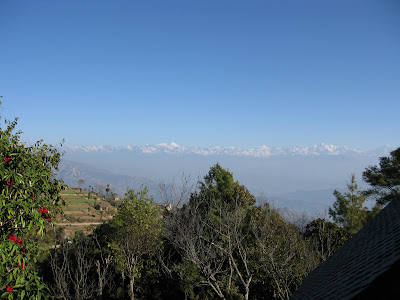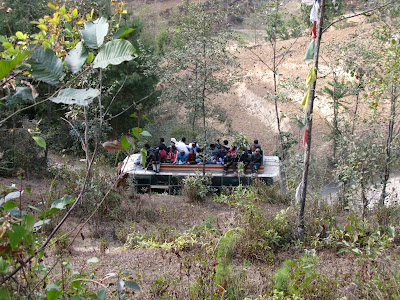Despite the impression of India as a major economic threat to the developed world, the Indian economy is a house of cards built on a mound of sand. Taught by the business savvy Soviets in the 1970s, Indians have structured their large companies so poorly that I think it even amazes them that they are still functioning. Everything from automotive, to petro-chemical to manufacturing revolves around profit taking, corruption and short-term gain. The products and services they offer are about convenience to the corporate heads rather than consumer desire. It is a “you’ll take want we offer you” market!
Last year when we arrived, we signed up for internet service. They had several plans ranging from the ridiculously low speed to 1 Mbps (which has not been seen in the US for 10+ years) to the blazing speed of 4 Mbps (I believe in Minneapolis the lowest speed you can get is around 25 Mbps). In addition, they offered two types of plans at all their speeds: One was called the unlimited plan and the other, the limited plan. The Limited Unlimited Plan, as the name implied allowed you to download a limited amount after which you would need to buy additional capacity or your internet ceases to run until the next billing cycle. The Unlimited Plan allows you to download an unlimited amount of data. But in India, not all is what it seems and if there is an angle to be played, they will play it.
Last year, as I was saying, we signed up for internet service. We choose the 4 Mbps, unlimited plan and shortly after were hooked up and surfing merrily. It, though, seemed my merry surfing was a bit slow, so I checked the speed and discover we were actually surfing a much smaller wave. Rather than 4 Mbps we had purchased, we were at 2. I called the representative who sold us the contract, set up our system and subsequently collected the commission and told him the issue. He, without skipping a beat, told me that 4 Mps was simply not available in my area and the fastest I could get would be 2. I, then, asked the obvious question – “Why, then, would you sell me 4, if you knew it was not available?” After a few seconds of silence, we moved on. He corrected the bill and I put the incident behind me as a one-off incident. I was very, very naive.
This month, we downloaded a lot of stuff and found out what unlimited really means. You see, at AirTel, one of India’s largest telecommunication companies, they have a clause in each contract called the “Fair Usage Policy.” Under this policy, the unlimited plan becomes the Unlimited to a certain point plan. When you read the fine print, the Unlimited Plan actually limits the amount you can download at the agreed upon speed, but allows you to keep downloading (that would be the unlimited part) but at a ridiculously slow speed of 256Kbps. To put this in perspective, there were dial-up, phone modems that were faster than that in the early 90s, so in essence, the unlimited Plan is, in fact, limited, unless the only thing you want to do is watch the Google search page load for 30 seconds.
To rectify this, I called the AirTel customer service line last night. The first amazing thing is that even to change your plan and give them more money per month, they charge you for the call. They own the phone lines and are paying the customer service reps, but they still charge to a few bucks just for the privilege. Already pissed about the aforementioned two issues, this one really put me over the edge.
When the rep finally answered, I explained the situation and asked to have my internet speed and capacity expanded to rectify the situation. She said that this could not be done until the next billing cycle, but I could buy additional capacity at 2Mbps on an hourly rate for roughly the same price as I would pay for a week. Ah, the scam is exposed. Even though there is plenty of capacity, they have set up the plans to sell you more. Now, I was outraged! I asked a few rhetorical questions like “does anyone actually fall for the scam?” and “are you paid on commission?” She was less enthusiastic about answering these than the questions about the plan! It is pretty amazing when you think about it. The idea is that you create a scarcity of a product that is in no way, shape or form scarce.
I eventually calmed down (read, stopped using my outside voice) and told her to upgrade the plan, but before she did it, I requested she check to make sure the speed was available in my area based on my past experience. “Fool me once” and all! She said that she could not actually check to see if the speed was available, but she would put in for the plan change to 4Mbps and someone would do a check. I assume the same someone that did it the last time, so I asked to be transferred to someone who could answer my question. Over the next 30 minutes, I talked to colleagues and supervisors at AirTel, but not a single person could tell me if the plan for which I was going to be charged existed. Again, genius! Sell a product you have no intention of providing and can only be verified by someone with the correct knowledge. Add a little artificial rationing and you have yourself a license to print money. Caveat Emptor!
Now many of you are saying, well India is a market economy and completion would keep this under control. Well, you’d be wrong. Every telecommunications company has the exact same deal for the exact same price. They also do not have anti-trust laws. Hum?
So, I guess we will have to wait for the next billing cycle and see what happens! In the mean time, I will spend the next 45 minutes uploading this blog.
Last year when we arrived, we signed up for internet service. They had several plans ranging from the ridiculously low speed to 1 Mbps (which has not been seen in the US for 10+ years) to the blazing speed of 4 Mbps (I believe in Minneapolis the lowest speed you can get is around 25 Mbps). In addition, they offered two types of plans at all their speeds: One was called the unlimited plan and the other, the limited plan. The Limited Unlimited Plan, as the name implied allowed you to download a limited amount after which you would need to buy additional capacity or your internet ceases to run until the next billing cycle. The Unlimited Plan allows you to download an unlimited amount of data. But in India, not all is what it seems and if there is an angle to be played, they will play it.
Last year, as I was saying, we signed up for internet service. We choose the 4 Mbps, unlimited plan and shortly after were hooked up and surfing merrily. It, though, seemed my merry surfing was a bit slow, so I checked the speed and discover we were actually surfing a much smaller wave. Rather than 4 Mbps we had purchased, we were at 2. I called the representative who sold us the contract, set up our system and subsequently collected the commission and told him the issue. He, without skipping a beat, told me that 4 Mps was simply not available in my area and the fastest I could get would be 2. I, then, asked the obvious question – “Why, then, would you sell me 4, if you knew it was not available?” After a few seconds of silence, we moved on. He corrected the bill and I put the incident behind me as a one-off incident. I was very, very naive.
This month, we downloaded a lot of stuff and found out what unlimited really means. You see, at AirTel, one of India’s largest telecommunication companies, they have a clause in each contract called the “Fair Usage Policy.” Under this policy, the unlimited plan becomes the Unlimited to a certain point plan. When you read the fine print, the Unlimited Plan actually limits the amount you can download at the agreed upon speed, but allows you to keep downloading (that would be the unlimited part) but at a ridiculously slow speed of 256Kbps. To put this in perspective, there were dial-up, phone modems that were faster than that in the early 90s, so in essence, the unlimited Plan is, in fact, limited, unless the only thing you want to do is watch the Google search page load for 30 seconds.
To rectify this, I called the AirTel customer service line last night. The first amazing thing is that even to change your plan and give them more money per month, they charge you for the call. They own the phone lines and are paying the customer service reps, but they still charge to a few bucks just for the privilege. Already pissed about the aforementioned two issues, this one really put me over the edge.
When the rep finally answered, I explained the situation and asked to have my internet speed and capacity expanded to rectify the situation. She said that this could not be done until the next billing cycle, but I could buy additional capacity at 2Mbps on an hourly rate for roughly the same price as I would pay for a week. Ah, the scam is exposed. Even though there is plenty of capacity, they have set up the plans to sell you more. Now, I was outraged! I asked a few rhetorical questions like “does anyone actually fall for the scam?” and “are you paid on commission?” She was less enthusiastic about answering these than the questions about the plan! It is pretty amazing when you think about it. The idea is that you create a scarcity of a product that is in no way, shape or form scarce.
I eventually calmed down (read, stopped using my outside voice) and told her to upgrade the plan, but before she did it, I requested she check to make sure the speed was available in my area based on my past experience. “Fool me once” and all! She said that she could not actually check to see if the speed was available, but she would put in for the plan change to 4Mbps and someone would do a check. I assume the same someone that did it the last time, so I asked to be transferred to someone who could answer my question. Over the next 30 minutes, I talked to colleagues and supervisors at AirTel, but not a single person could tell me if the plan for which I was going to be charged existed. Again, genius! Sell a product you have no intention of providing and can only be verified by someone with the correct knowledge. Add a little artificial rationing and you have yourself a license to print money. Caveat Emptor!
Now many of you are saying, well India is a market economy and completion would keep this under control. Well, you’d be wrong. Every telecommunications company has the exact same deal for the exact same price. They also do not have anti-trust laws. Hum?
So, I guess we will have to wait for the next billing cycle and see what happens! In the mean time, I will spend the next 45 minutes uploading this blog.




















































































